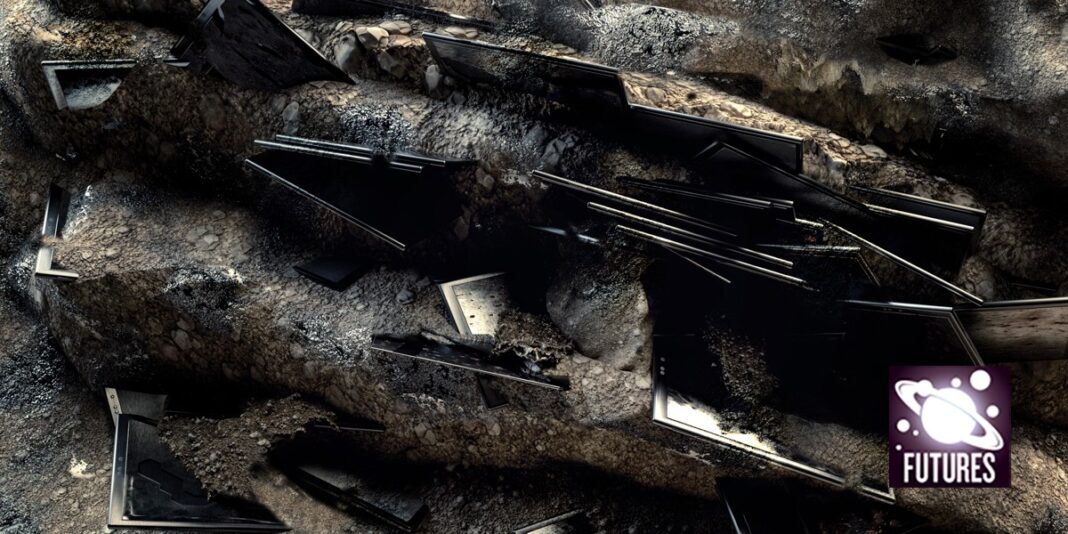The requirement of evidence
I was the one who found the cache of old books, including Principles of Archaeology, so I am leading the dig. Books can survive for decades if the storage conditions are favourable, as they were in the partially collapsed basement. Perhaps it fell down as the result of an earthquake? We know about earthquakes from our personal experiences, aka data, of the earth quaking.
It turns out archaeology is the study of the past through physical remains. Plenty of people have tried to figure out what happened to the People from Before, but I am using this ‘science of archaeology’. I have chosen the dig site to be one of their dumps. In The Before, each human was so rich they discarded tonnes of trash in their lifetimes. Yes, it boggles the mind. According to archaeology, we should dig straight down, and as we do so, we should uncover evidence of their past lives. We must study these physical remains objectively and hypothesize and draw scientific conclusions about their lives and what happened to them.
The nature of evidence
The top level of the dump is a mixture of sand and other minerals, dead leaves and unidentifiable organic matter — so, in other words, soil.
The second level of the dump is a fine grey ash with a lot of specks of metal. One of my assistants raises the hypothesis that this ash is from a volcano or meteor strike.
But in preparation for the dig, I studied various substances we might be expected to find, and I know this ash is cremated human remains. I point out some of the small bone fragments to make my case. Eventually, my whole team agrees.
The ash is important data; it is probably the remains of the People from Before. At the end of their era, there was a massive die-off. Why? This is the primary mystery we are attempting to solve.
The layer of ash is very thick, but I hypothesize that the evidence we seek is underneath.
Read more science fiction from Nature Futures
After several days of digging we finally make it through the ash layer. We uncover a layer made of their thin rectangular technological devices. These are primarily black plastic with the largest at 30 inches (we carefully measure). There are many, many smaller devices, all about 6 inches tall by 3 inches wide. According to our knowledge of The Before, these are called computers and store data and information. We all wonder why there are so many. We do not know.
An assistant hypothesizes that they needed many devices because they possessed a huge amount of data. Perhaps this is true, but we have never been able to access any of these data. This technology layer is useless to us.
We keep digging and eventually make it to the layer underneath the technology. I warn my fellow archaeologists to be on the special lookout for newspapers, magazines and books. They all nod. I don’t know why I tell them this; they know. Books and the like from Before are our most precious resources.
This layer contains more diverse materials, from bags made of plastic to dishes, clothing, toys and furniture made of plastic; along with some ceramics, glass, wood, fabric, metal and other materials.
An assistant yells, “I found something!”
We all stop our digging and traipse over to him.
Hands shaking, he’s holding out a single sheet of paper, somehow covered in plastic. It’s very colourful with blue, green, red and black letters and shapes; it’s as if it were brand new.
The words on the page are easy to read: “Get the latest cutting-edge brain-computer for free! Yes, you heard right! We are giving away the newest microelectrode array technology! Free tech! Free installation! Perfectly safe! With low-cost monthly data plans! Don’t miss out! Don’t get left behind! Text now!” The bottom of the sheet has a bunch of numbers and a larger square made of smaller black and white squares.
Interpreting the evidence
Hypotheses depend on evidence; this sheet seems like important evidence. Its vertical position in the dump also seems important. But archaeology is new to me — and everyone else — so I’m not quite sure of the significance.
We take a break, and an assistant passes around the sheet. We all study it. We marvel at the pristine condition. We hypothesize.
“Is it an advertisement for this brain-computer thing?” someone asks.
“I guess,” I said. “But are they saying they’re going to put things in people’s brains? Why would they do that?” I feel like I almost understand this archaeology stuff, but I do not understand the People from Before at all.
“And what’s a data plan?” an assistant asks.

